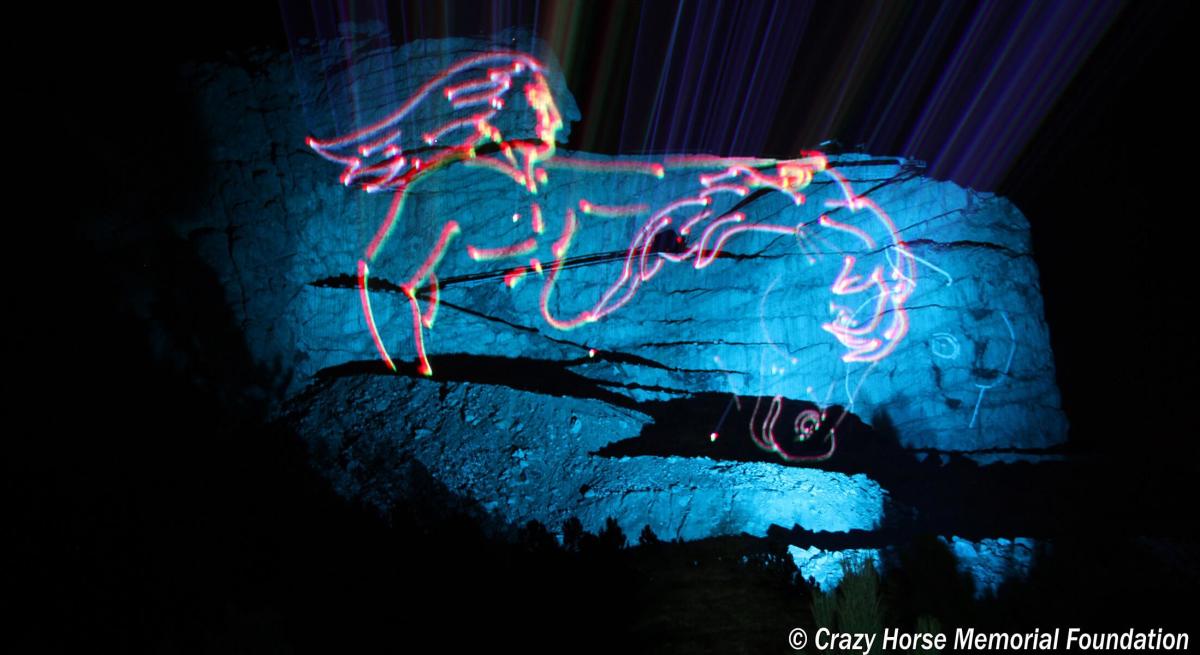One year and one month after sculptor Korczak Ziolkowski moved from Connecticut to the Black Hills at the invitation of Lakota Chief Henry Standing Bear, the first blast was made on Thunderhead Mountain outside the town of Custer.
Ziolkowski had gained national acclaim after his sculpture earned first prize at the 1939 World's Fair and after he worked for Gutzon Borglum in carving Mount Rushmore.

Standing Bear, educated in Pennsylvania, had been on a years-long quest to find a sculptor to carve a memorial to his cousin and Lakota leader, Crazy Horse. He said: "My fellow chiefs and I would like the white man to know that the red man has great heroes also."

At age 39, Ziolkowski took the challenge and dedicated the rest of his life to the project. The pose of the Lakota warrior astride a horse with his arm out-stretched is intended to reflect Crazy Horse's statement: "My lands are where my dead lie buried." The sculpture, when finished, is planned to be 563 feet tall.
The sculptor worked until his death at age 74 on Oct. 20, 1982. His widow, Ruth, and many of the couple's 10 children continued work on the sculpture, shifting efforts to complete the face. The face was completed and dedicated in 1998. It is 87 feet tall compared to the faces on Mount Rushmore at 60 feet.

Ruth Ziolkowski died May 21, 2014, and work continues on the memorial headed by a three-person executive committee and a board of directors. The sculpture is intended to be the center of a complex that includes Indian University of North America and Medical Training Center, the Indian Museum of North America, the Native American Educational and Cultural Center and recreational facilities.